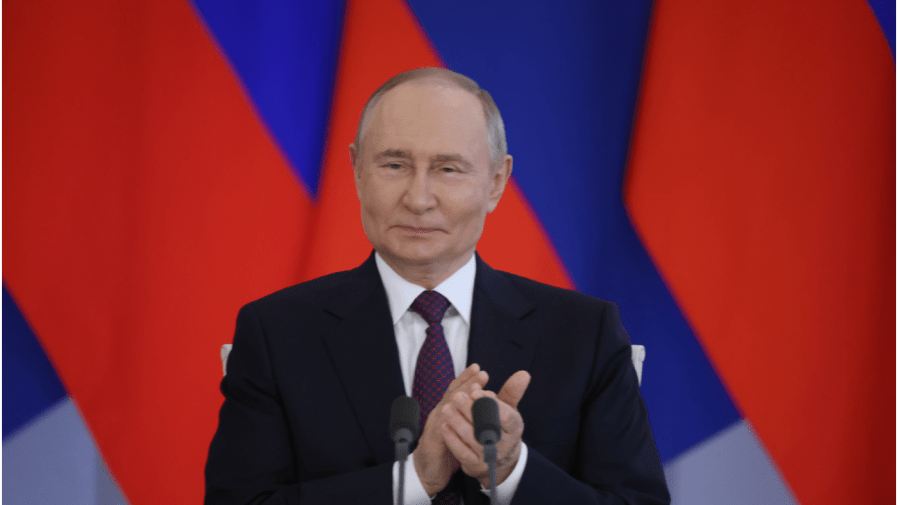
On Monday, President Trump set a new 10 to 12-day ultimatum for President Vladimir Putin to enter peace talks over Ukraine or face a new tariff regime intended to halt global sales of Russian energy products.
Trump is promising a 100 percent “secondary tariff” on any country that imports Russian energy products, targeting India, China, Turkey and others. He’s right to recognize that pressuring the Kremlin’s main cash cow is a way to grab Putin’s attention, but his approach is counterproductive and incomplete.
There are two ways to change Putin’s plans in Ukraine. The first is to stop Russia’s ability to wage its war of choice by constraining its finances. Oil and gas sales account for about a quarter of the Kremlin’s budget. The G7, including the U.S., has taken steps since the onset of the war to lower Russia’s energy revenues. Last month, the Kremlin’s tax proceeds from energy sales were at their lowest since January 2023; however, the Russian government still pocketed about $6 billion.
This shows the tradeoff in the G7’s initial goal — dent Russian revenues without fully blocking the sale of Russian oil. The G7 has attempted this balancing act because Russian oil exports still make up 7 percent of global oil supply and a full shut-in would roil energy markets across the world.
Trump’s new plan proposes to do exactly that. To stave off the threat of U.S. tariffs, importing countries may stop accepting Russian oil. Without Russia’s 7 million barrels per day of oil exports on the market, global crude oil prices could shoot up almost 25 percent, even assuming other suppliers like OPEC have the capacity and desire to pick up half the slack.
Prices at the pump in America would then climb just as tariff-induced inflation hits the economy at a time when nearly two-thirds of Americans disapprove of Trump’s handling of inflation.
The other scenario, in which some importers defy Trump’s threat, is not much better. The imposed secondary tariffs would further ignite inflation in America, especially if they target Chinese imports.
Another ratcheting up of tariffs timed simultaneously with increases we saw in bilateral tariffs yesterday could destabilize Wall Street’s equity markets again, all while quickening price increases on Main Street.
Putin understands these dynamics; that’s why the secondary tariff threat won’t bring him to the table. It’s true that blocking the sales of Russian oil would be a massive hit to the Kremlin, but he sees this as an empty threat because the plan is costly not just to Russia but to the whole world and, in particular, America.
Instead, Trump can implement a different tariff to attack Russia’s revenues without causing collateral chaos. With existing authorities, the Trump administration can impose sanctions on any company or individual in the world involved in a Russian oil and gas sale. Wanting to maintain access to America’s financial system, most will seek to avoid sanctions.
The U.S. could permit transactions if Russia pays a shipment fee on each sale — a Russian universal tariff — to the Treasury Department. From there, the U.S. could ratchet this tariff up month by month if Putin drags his feet on negotiating. Financially squeezed over time, Putin will feel increasingly boxed in.
The second way to change Putin’s calculus is by fortifying Ukraine financially and militarily. Right now, the Kremlin sees global support for Ukraine waning, with citizens in America and Europe fatigued of funding a foreign war.
But we don’t need to rely on our own taxpayers to back the Ukrainian people. Instead, the U.S. and G7 should seize the $300 billion worth of Russian sovereign assets already frozen in our countries and commit them to supporting Ukraine’s defense and reconstruction.
Doing so will foil one of Putin’s main strategies. Despite a standstill on the battlefield, he thinks he can bring Ukraine to its knees by destroying its economy. That will prove much harder if Ukraine can access Russia’s frozen assets.
In addition to financial support, Trump and Congress should commit to providing Ukraine with the military resources it needs to continue defending itself. After the 2024 election, Putin thinks he can wait out Ukraine’s limited arsenal. Trump needs to flip the script and make clear that a war of attrition is not winnable for Russia.
His decision to unpause previously approved military assistance was a good first step. But to force a rethink from Russia, Trump must go further. Committing to arming Ukraine with the weapons made by American workers and companies until Russia agrees to and upholds a ceasefire will do just that.
After years of prolonged conflict and unnecessary death, there is a clear need to force Putin’s hand. President Trump’s instinct is right, but his approach is wrong.
To get Russia off the battlefield and to the table, he must delineate a plan that makes negotiating Putin’s best option, and that is one that hinders the Russian war machine, helps Ukraine and garners support from Americans and our allies.
Samarth Gupta is a Rhodes Scholar who served in the Treasury Department as a policy advisor and special assistant for Russia-Ukraine from 2022 to 2025. His writing can be found on wickedgoodpolicy.com.


